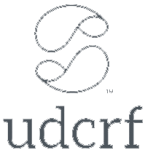The commercial infrastructure of today and tomorrow
Most people within the ‘banking,’ ‘redemption,’ ‘freeman’ and ‘sovereignty’ space, have heard about an eventual collapse of our current worldwide banking system. Presuming that this is the case, the real concern ought to be ‘what do we do for ourselves and our future dependants.’ In other words, if the system as we know it was to suddenly grind to a halt, would we already be positioned to sustain ourselves? Imagine stepping outside your home within hours of a collapse. Imagine the confusion and disorder that would plague the streets. In such a scenario there are three types of people, in terms of how they would be affected: positively, neutrally, and negatively.
The positive, would be those people that would have either created an alternative system, or aligned with an existing concurrent one. The neutral, would be people who had not been part of any commercial and banking systems… Eg., those who were living a village lifestyle. They would have already been self-sufficient for many generations before them. The negative, would be people that would suffer in one way or another due to not being prepared for a collapse.
Blockchain
The Internet bubble (or dot.com boom) occurred between 1995-2001. At its inception, only those who had their ears to the ground so to speak understood the significance of the internet. They saw the huge potential for business, marketing, innovation, creativity and aligned whatever they were doing commercially, with the Internet.
Presently, we are at the ground-floor of the Blockchain ‘boom’. What is the difference between the two? Think of the internet as communications-exchange (i.e., information) protocol, whereas the blockchain is a value-exchange (i.e., currency) protocol. The blockchain, however, does not run on its own system… it is built on top of the existing Internet. See YouTube video here for an in-depth explanation of the Blockchain.
So, what is the Blockchain and how does it compute in basic terms? What does it mean to people on a day-to-day practical basis? People from all walks of life are hearing about bitcoin (BTC); either as a way to make money, a way to store value in a safe, or as an alternative means of transacting (i.e., an alternative way to purchasing goods and services). BTC, like all crypto coins, can also be viewed as a public ledger that is completely transparent. The more exciting aspects of the benefits of crypto coins is that the Blockchain provides the means for peer-to-peer transfer of value (money), without the need for banks and third-party systems such as visa, Mastercard or swift.
With that being said… there are a few drawbacks with bitcoin and other similar coins. For instance: (1) the exchange rates from BTC to local currencies are quite high, (2) the fees for making purchases are also quite high, and (3) the volatility of its value. BTC is essentially driven by supply and demand. It works this way because there is no real intrinsic value backing it. In other words, BTC is not asset-backed at all. The same it true for 99% of the crypto coins available today.
UDCRF
“The Universal Digital Currency Reserve Foundation (UDCRF), an entity set up by the United Humanitarian Trust foundation (UHTf) in conjunction with the digitalReserve, is the Official Digital Currency issuer of the four chosen Digital Currencies in various denominations. All currencies are tracked (not pegged) to the Euro giving us the flexibility to track other currencies for the benefit of us all in times of financial crisis around the world [citation].”

The four denominations of coins held by the UDCRF are as follows:
REVO – 10 Eur
DEURO – 100 Eur
CENTUM – 1,000 Eur
MILIA – 1,000,000 Eur
These coins are fully-asset back and the UDCRF is running on its own private Blockchain (version III of bitshares platform). Being fully asset-backed means that the four digital currencies listed above are non-volatile, as they are based on real assets such as gold and platinum, which are held in secure storage. In other words, they are fixed value digital currencies thus giving people the safety and security they need with respect to their money. UDCRF in partnership with the UHTf also supports Humanitarian projects around the world. See their flagship projects here.
Putting the latter into closer perspective: UDCRF and UHTf is all about creating alternative systems for good governments and sovereign communities worldwide – with sustainability in the areas of government, banking, education, food, clothing, energy, healthcare, recreation, sport, and more. Other systems such as transportation (land, air and sea), permaculture, virtual farms, clean distilled water (pH 9+), aquaponics, hydroponics and more, are also in the making.
“Hopefully the World and its People will become inspired to emulate such projects, maybe not on such an enormous scale but in the essence of working with Food, Energy, Water and Infrastructure, utilising new and emerging technologies that will make all the difference when future proofing Humanity against possible future issues [citation].”

